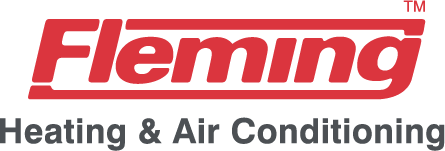
A quality HVAC system is essential for a comfortable and energy-efficient home, but it’s also a big investment. You deserve the most effective comfort solutions possible, which is why HVAC rebates are so beneficial. They can help guarantee high-efficiency furnaces, air conditioners and other equipment is more affordable.
HVAC efficiency standards are going up next year, so now’s an ideal time to check out your options. Different companies, organizations and even government entities are extending rebates in 2023 to help everyone acquire a new, high-efficiency HVAC system.
Receive a Tax Rebate by Installing a High Efficiency Furnace
Many manufacturers of high-efficiency furnaces offer rebates for a new system. These furnaces include energy-efficient components such as variable-speed blower motors, which allow the thermostat to refine how much heating is produced. It’s an easy way to lower energy use overall. Local utilities also share furnace rebates since less energy use means less strain on the local energy grid.
The government’s ENERGY STAR® program is also useful for securing a furnace rebate. You can type in your ZIP Code to find out which rebates you could be eligible for. Equipment with the ENERGY STAR® rating means it meets your region’s standards for energy-efficient operation.
Rebates for Air Conditioning Systems
Many of the same rebates for high-efficiency furnaces are also suitable for air conditioners. You can save hundreds on new installation for efficient cooling from a top brand such as Lennox. Just check with your local utility companies to verify which makes and models are suitable. Additionally, you can often combine federal and local rebates for even greater savings. Don’t hesitate to see what all you can find, because it can quickly add up to 10% of a new, high-efficiency cooling system
2023's Rebates for Smart Thermostats
A smart thermostat is an especially valuable improvement to your home comfort system. With intelligent programming, you can optimize the daily schedule. Utility companies appreciate this kind of efficiency, and so most offer rebate programs for new smart thermostats. In time, these rebates essentially permit you to get a free smart thermostat!
Local utility companies also provide programs where they exchange discounted rates for the capacity to access your thermostat during peak energy use. This helps reduce strain on the grid, especially when heat waves or cold fronts come through. When participating in this program, your thermostat will automatically be corrected by a few degrees.
Other Incentives: Tax Credits for Energy-Efficient Equipment and Home Improvement Projects
Somewhat different than rebates, tax credits are also available for the purchase and installation of energy-efficient HVAC equipment. For example, the Inflation Reduction Act reactivated a program in 2021 that offered credits for up to 10% of the project’s cost. The updated credits are now worth 30% of the cost and may be claimed each year as opposed to only once. These credits are available for a much wider variety of projects, like home energy audits, electrical, insulation, ventilation, and even your doors and windows! The programs are tailored to share the most benefits for lower-income households, maximizing the improvements to HVAC efficiency nationwide.
New Legislation for Heat Pump Rebates
The recently passed Inflation Reduction Act contained separate legislation referred to as the High-Efficiency Electric Homes and Rebates Act, or HEEHRA. This incentive is especially aimed toward heat pump technology, which transfers heat instead of generating it by burning fuel. To persuade more people to transition to this energy-efficient comfort system, these rebates are significantly higher compared to incentives for AC units and furnaces.
If the household’s income is lower than 80% of the local median, you can use the rebates to cover 100% of the costs of a new heat pump. Households that meet 80-150% of the typical income can take care of 50% of equipment and installation costs.


